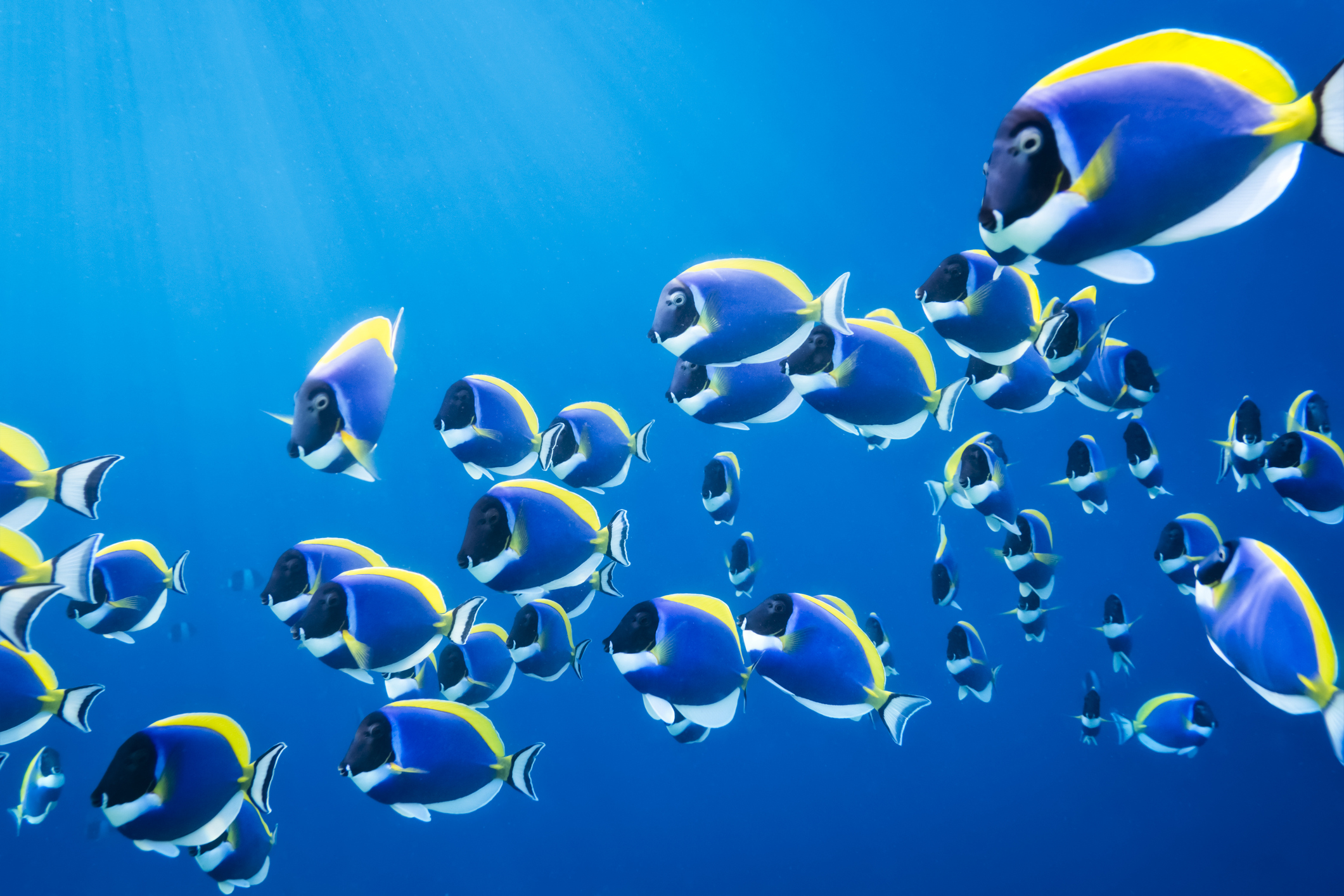
The ocean is full of beautiful creatures of all different shapes, sizes, and colours. Even within one family of marine animals, there can be huge variations. Tangs (Acanthuridae) are a great example of just how different a family of fish can be.
What are tangs?
Tangs are a family of fish sometimes referred to as surgeonfish. These beautiful fish can be found in the coral reefs of the Indo-Pacific and Atlantic Oceans, where they feed on algae and leafy greens.
Being intermediaries in their ecosystems, they are preyed upon by larger fish such as tuna, bar jacks, and tiger groupers.
How to identify a tang fish
Tang fish are identifiable by their sharp, retractable spine located at the base of their tail, and flat bodies with a pointed snout.
You might have an image in your head of a brightly coloured fish, but not all tang fish have a brightly-coloured appearance. Some tangs, like the gem tang, are black with white spots, while others, like the regal tang, are known for their bright blue and yellow colours.
Tang fish at Blue Reef Portsmouth
Let us introduce you to some of the tang fish that we have at Blue Reef Portsmouth.
Pacific sailfin tang (Zebrasoma veliferum)
This eye-catching tang lives in the coral reefs of the Indo-Pacific region and is known for its tall dorsal and anal fins that resemble sails. With stunning bands of brown, white, and yellow, it grazes on algae and helps keep reefs looking clean.
Purple yellow tail tang (Zebrasoma xanthurum)
Found mainly in the Red Sea and western Indian Ocean, this tang boasts a rich purple body with a bright yellow tail. It’s a herbivore that scrapes algae off rocks and coral with its sharp, beak-like mouth.
Yellow tang (Zebrasoma flavescens)
Native to the reefs of Hawaii, this bright lemon-yellow fish is instantly recognisable. It’s a peaceful grazer that feeds mostly on algae and helps maintain the health of coral reefs by keeping them algae-free.
Blue spot naso (Naso vlamingii)
Also called the vlamingi tang, this large, torpedo-shaped fish is found in the Indo-Pacific. It’s blue-grey with electric blue spots and a protruding snout, feeding on zooplankton and algae as it cruises through open water.
Tomini tang (Ctenochaetus tominiensis)
Compact and hardy, the tomini tang comes from the western Pacific. It has a brown body with gold-edged fins and is excellent at cleaning up algae and detritus, making it a favourite in reef aquariums.
Orange face tang (Acanthurus bariene)
This lesser-known tang is found in the Indian Ocean and parts of the western Pacific. It has a silvery-grey body with a distinctive orange-tinged face.
Kole tang (Ctenochaetus strigosus)
Native to Hawaii, the kole tang has a reddish-brown body covered in fine, golden horizontal lines. Its bristle-like teeth are perfect for scraping off algae from rocks and glass.
Regal tang (Paracanthurus hepatus)
The regal tang, often called the blue tang or Dory, is a bright blue fish with a yellow tail and black markings that hails from the Indo-Pacific reefs and is a favourite amongst aquarium visitors because of its famous cameo in two Disney Pixar films.
Come and see for yourself!
If you’d like to come and see some tangs up close, don’t wait to book your tickets to Blue Reef Aquarium Portsmouth!
Type
Fish
What do they eat?
Algae, plankton, brine shrimp, and seaweed
Size
Up to 30cm
Water Type
Coral reefs
Where are we?
Indo-Pacific
